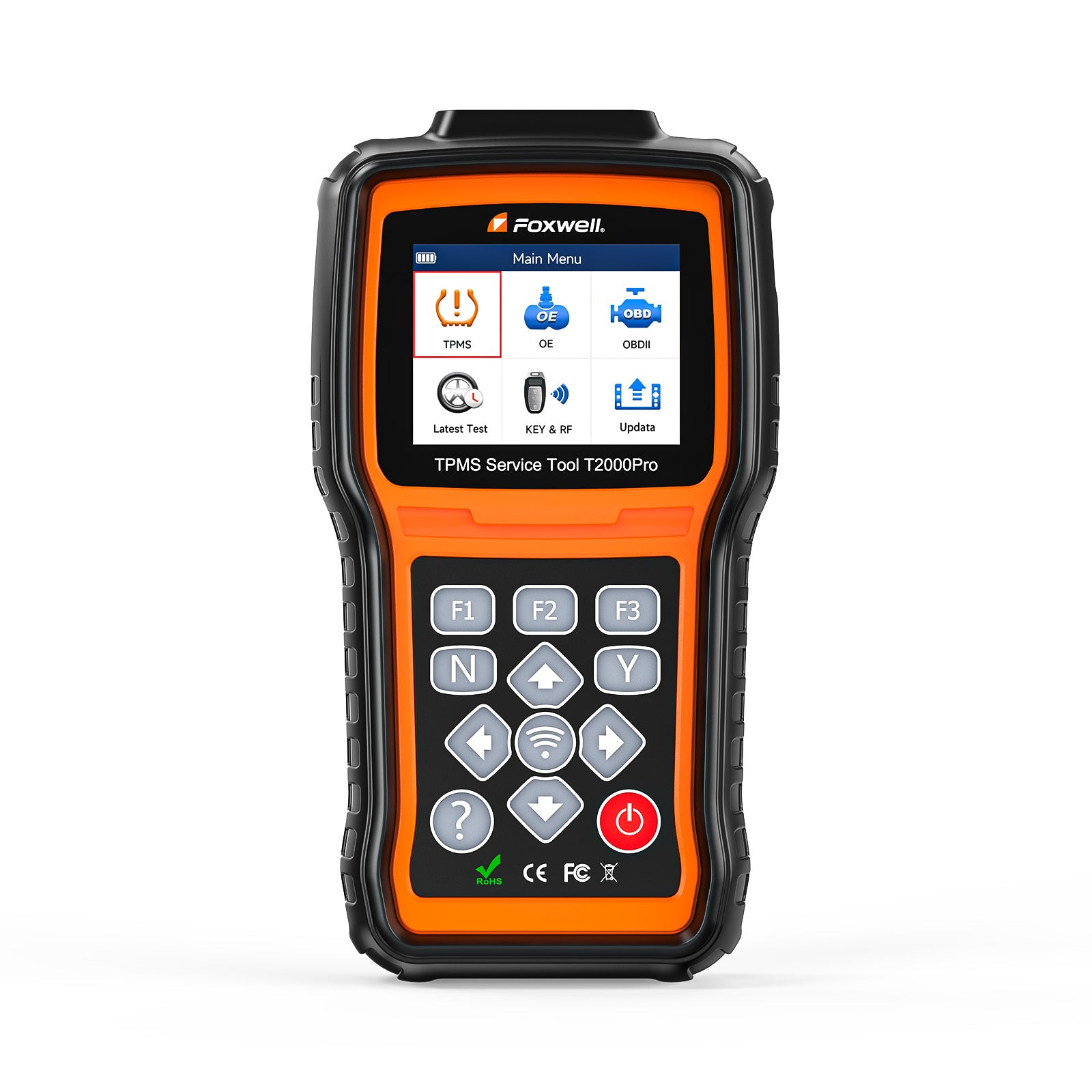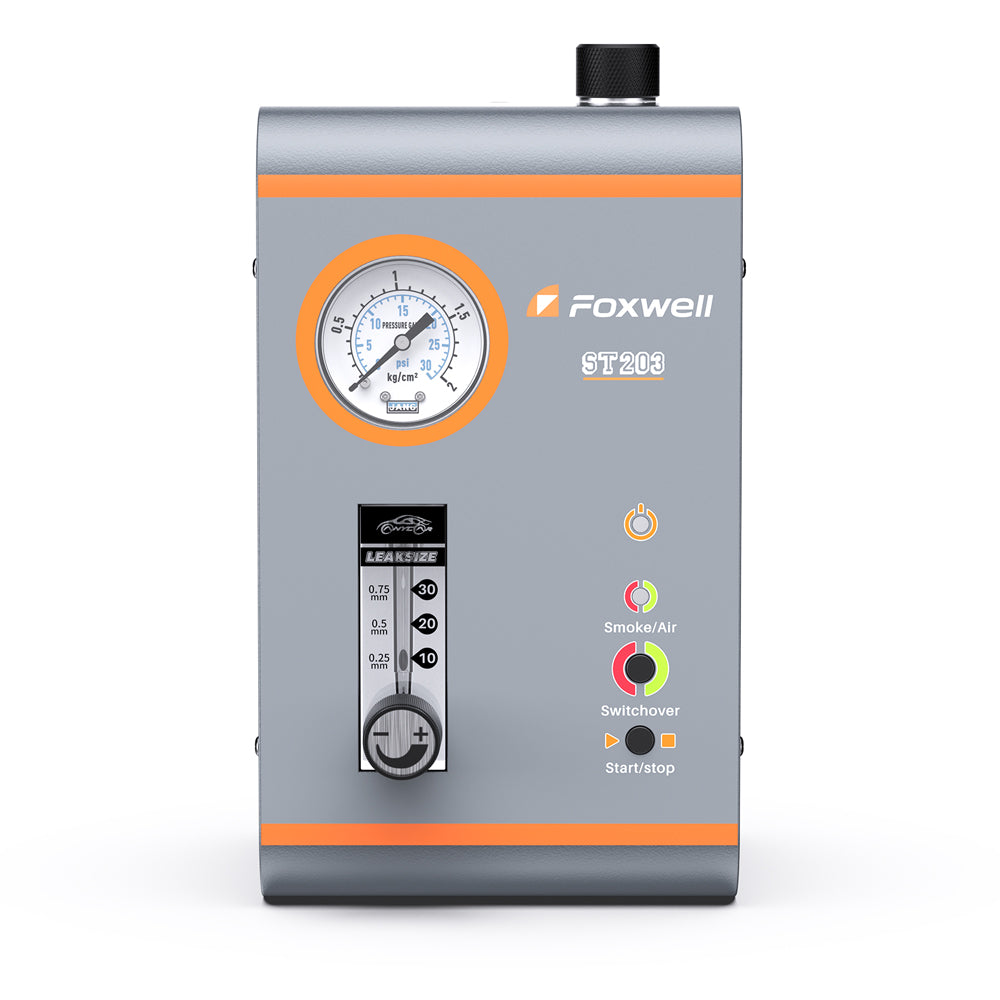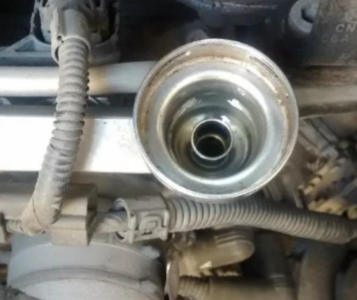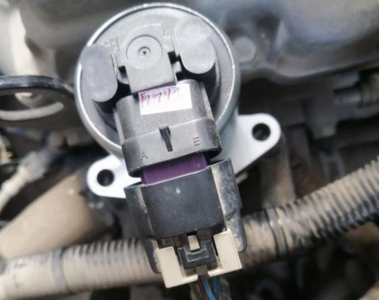What is Fuel Trim?
Fuel trim, short for "fuel mixture adjustment," refers to both a system and a key parameter employed by a vehicle’s Engine Control Unit (ECU) to adjust the air-fuel mixture in real time, with the core goal of maintaining the ideal ratio (typically 14.7:1 for gasoline engines) for optimal combustion. Expressed as a percentage, it indicates whether the ECU is adding to or subtracting from the fuel supply relative to the base fuel map—serving as a direct reflection of the ECU’s corrective actions.

How Do STFT and LTFT Differ?
1. Short-Term Fuel Trim (STFT)
- Purpose: Immediate, real-time adjustments to the fuel mixture based on feedback from the oxygen (O2) sensor.
- Range: Typically fluctuates between ±10% (though some vehicles may allow wider ranges).
- Behavior: Responds quickly to transient conditions (e.g., throttle changes, minor vacuum leaks).
- How it works: Oxygen sensors monitor unburned oxygen in exhaust to signal the ECU. If the mixture is lean (too little fuel), the ECU increases injection (positive trim); if rich (too much fuel), it reduces injection (negative trim).
- Example: If the O2 sensor detects a lean condition, STFT adds fuel (positive %). If it detects rich, it reduces fuel (negative %).
2. Long-Term Fuel Trim (LTFT)
- Purpose: Learned adjustments over time, based on trends from STFT. The ECU stores these values to maintain optimal fueling.
- Range: Ideally within ±5%, but up to ±10% is often acceptable. Values beyond ±15% usually indicate a problem.
- Behavior: Adjusts more slowly and remains in the ECU’s memory (even after engine shutdown).
- How it works: If STFT consistently shows a lean trend (e.g., +8% for 10 minutes), LTFT rises to lock in higher injection, reducing STFT’s need to overcompensate. Conversely, consistent negative STFT (rich) prompts LTFT to drop, lowering fuel injection long-term.
- Example: If STFT consistently adds fuel, LTFT will eventually take over part of that correction.
Key Differences
| Feature | STFT | LTFT |
|---|---|---|
| Response Time | Fast (real-time) | Slow (learned) |
| Memory | Reset when engine off | Stored in ECU |
| Adjustment Range | ±10% or more | Ideally ±5% (max ~±25%) |
| Primary Input | O2 sensor feedback | Average of STFT trends |
Why Fuel Trim Matters?
Fuel trim is a critical function of the engine control system, ensuring optimal combustion efficiency, performance, and emissions control. Here’s why it matters:
1. Maintains the Correct Air-Fuel Ratio (AFR)
- The ideal AFR for gasoline engines is 14.7:1 (stoichiometric ratio) for efficient combustion.
- Fuel trim adjusts fuel delivery to maintain this ratio, preventing:
- Too Lean (High AFR): Causes misfires, hesitation, and overheating.
- Too Rich (Low AFR): Wastes fuel, fouls spark plugs, and clogs catalytic converters.
2. Ensures Smooth Engine Performance
- Proper fuel trim prevents:
- Hesitation & Stumbling (from lean mixtures).
- Bogging Down or Rough Idle (from rich mixtures).
- Poor Throttle Response (if trims are maxed out).
3. Reduces Harmful Emissions
- Catalytic Converters require near-perfect AFR to neutralize pollutants (CO, NOx, HC).
- Incorrect fuel trim leads to:
- High CO (Carbon Monoxide) – From rich mixtures.
- High NOx (Nitrogen Oxides) – From lean mixtures.
- Failed Emissions Tests – Common if LTFT exceeds ±10-15%.
4. Compensates for Engine Wear & Sensor Drift
Over time, components degrade (e.g., dirty injectors, aging O2 sensors). Fuel trim helps by:
- Adjusting for clogged fuel injectors (adding fuel via positive trim).
- Compensating for vacuum leaks (reducing fuel via negative trim).
- Adapting to MAF/MAP sensor inaccuracies**.
5. Early Warning of Engine Problems
Abnormal fuel trim values can reveal issues before they cause major damage:
- STFT constantly high? → Possible vacuum leak or weak fuel pump.
- LTFT stuck at +20%? → Likely a significant air leak or failing injectors.
- Negative LTFT? → Could indicate a rich condition from a bad O2 sensor or leaking injector.
6. Fuel Economy Impact
- Excessive Positive Trim (Lean) → May improve MPG but risks engine damage.
- Excessive Negative Trim (Rich) → Wastes fuel, reducing efficiency.
- Optimal Trim (Near 0%) → Best balance of power and economy.
Conclusion: Why Monitor Fuel Trim?
- Performance → Keeps the engine running smoothly.
- Emissions → Ensures compliance with environmental regulations.
- Diagnostics → Helps identify problems early.
-
Efficiency → Maximizes fuel economy and engine longevity.
How to Read Long Term Fuel Trim (Bank 1) Data?
Long Term Fuel Trim (LTFT) for Bank 1 shows the ECU’s learned adjustments to the fuel injection over time. Understanding the values can help diagnose engine issues:
- Positive LTFT Values (+%)
- Indicates the ECU is adding fuel because the engine is running lean (too much air or not enough fuel).
- Common causes: vacuum leaks, faulty MAF sensor, low fuel pressure, clogged injectors, oxygen sensor issues.
- Example: LTFT +8% → ECU is increasing fuel by 8% to maintain proper air-fuel ratio.
- Negative LTFT Values (–%)
- Indicates the ECU is reducing fuel because the engine is running rich (too much fuel or not enough air).
- Common causes: leaking fuel injectors, faulty fuel pressure regulator, bad oxygen sensors, engine oil dilution.
- Example: LTFT –5% → ECU is decreasing fuel by 5% to correct a rich condition.
Related Reading: Air Fuel Ratio Sensor: How It Works and Why It’s Important
What are Normal Fuel Trim Values?
Ideal LTFT values are typically within ±5%(some sources extend this to ±10% under varying conditions like cold starts or high load, but consistent values beyond ±10% usually indicate a problem).
When the LTFT is close to 0%, it indicates that the engine is in normal condition.
Values beyond ±15% often indicate a problem that requires inspection.
What are the Common Causes of Abnormal LTFT Values?
1. Positive LTFT (Lean Condition – ECU adding fuel)
Vacuum leaks: Most Common. Air enters the intake without passing through the MAF sensor.
Faulty Mass Air Flow (MAF) sensor: Incorrect air measurement leads to insufficient fuel.
Low fuel pressure: Weak fuel pump or clogged fuel filter reduces fuel delivery.
Clogged or dirty fuel injectors: Reduced fuel spray causes lean mixture.
2. Negative LTFT (Rich Condition – ECU reducing fuel)
Leaking fuel injectors: Excess fuel enters the combustion chamber.
Faulty fuel pressure regulator: High fuel pressure causes rich mixture.
Bad oxygen sensors: Incorrect readings cause over-fueling.
Faulty coolant or intake air temperature sensors: ECU miscalculates fuel needs.
Bad Upstream O2 Sensor:Stuck rich signal, ECU pulls fuel unnecessarily.
3. Other Contributing Factors(Affecting Both Banks)
Exhaust leaks upstream of the O2 sensor
Intake air leaks after the MAF sensor
Carbon build-up in intake manifold or throttle body
Engine mechanical issues (compression problems, worn valves)
Failing EVAP Purge Valve (stuck open → extra fuel vapor).
Faulty Coolant Temp Sensor (incorrect cold enrichment).
Worn Spark Plugs or Weak Ignition (misfires skew fuel trims).
Aftermarket Modifications (cold air intake, exhaust, tune).
How Do You Use LTFT Data for Diagnostics?
Long Term Fuel Trim (LTFT) data is a powerful tool for identifying engine issues, but it’s most effective when combined with other information. Here’s how to use LTFT for diagnostics:
- Check LTFT Values for Bank 1 (and Bank 2 if applicable)
- Compare the readings to normal ranges (usually ±5%, up to ±10% acceptable).
- Note if values are consistently positive (lean) or negative (rich).
- Cross-Reference with Short-Term Fuel Trim (STFT)
- STFT shows immediate adjustments; LTFT shows learned, long-term trends.
- Consistent trends in STFT lead to LTFT corrections.
- Look at Related OBD-II Codes
- Codes like P0171 (System Too Lean) or P0172 (System Too Rich) often correlate with abnormal LTFT.
- Use LTFT to help pinpoint whether the issue is sensor-related, fuel-related, or vacuum-related.
- Identify Potential Causes
- Positive LTFT (lean): vacuum leaks, faulty MAF, low fuel pressure, clogged injectors.
- Negative LTFT (rich): leaking injectors, faulty fuel regulator, bad O2 sensors.
- Perform Targeted Tests
- Use smoke tests for vacuum leaks, fuel pressure tests, or inspect MAF/O2 sensors based on LTFT trends.
- Verify repairs by monitoring if LTFT returns to normal ranges.
Key Tip: To accurately perform these tests and monitor fuel trims in real time, tools like Foxwell diagnostic scanners simplify the process—they let you live-stream LTFT data, run fuel pressure diagnostics, and even trigger smoke test integrations for precise leak detection.
“I had a Ford F150 6-cylinder come in with lean misfire codes. While monitoring fuel trims, I noticed the Short-Term Fuel Trim (STFT) dropped as engine speed increased (less vacuum). This led me to perform a smoke test, which revealed intake manifold leaks at the EGR valve and two PCV hose leaks. After replacing the EGR valve and hoses and clearing the DTCs, fuel trims returned to normal.”
— Diagnostic case shared by a forum member (SK)
What Should You Know About Advanced Fuel Trim Monitoring?
While basic LTFT and STFT readings are helpful for most diagnostics, advanced monitoring gives you a deeper picture of how your engine behaves under different conditions. Here are some key things to know:
Multiple Banks
- V6, V8, and other multi-bank engines have separate LTFT and STFT readings for Bank 1 and Bank 2.
- Differences between the banks can help identify which side of the engine has a problem.
Operating Conditions Matter
- LTFT values change depending on idle, cruise, acceleration, or heavy load.
- Diagnosing only at idle can be misleading—always check trims at multiple conditions.
Altitude and Climate Effects
- Higher altitudes and extreme weather can shift fuel trim values.
- ECU adaptations may look like a fault but are simply environmental corrections.
Sensor and System Interactions
- Faulty MAF, O2, or MAP sensors can throw off LTFT readings.
- Exhaust leaks upstream of the O2 sensor may mimic lean conditions.
When to Seek Professional Help
- If LTFT exceeds ±15–20% across conditions, deeper diagnostics with professional equipment may be needed.
Takeaway: Advanced fuel trim monitoring isn’t just about looking at numbers—it’s about interpreting patterns across banks, driving conditions, and environmental factors to identify the real cause of an issue.
Related Reading: P2096 Code: Post Catalyst Fuel Trim System Too Lean (Bank 1) - Causes, Symptoms & Fixes
How Driving Conditions (Cold Start, Load, Altitude) Affect LTFT?
Long Term Fuel Trim (LTFT) values don’t stay fixed — they adapt to the engine’s operating environment. Here’s how different conditions affect LTFT:
- Cold Start
- During a cold start, the ECU runs the engine in open loop mode (ignoring O2 sensor feedback).
- LTFT isn’t adjusted immediately, but once the engine warms up and enters closed loop mode, fuel trims begin to stabilize.
- Abnormally high LTFT after warm-up may indicate sensor or fuel delivery issues.
- Engine Load
- At idle/light load, LTFT is very sensitive to small vacuum leaks or MAF sensor errors.
- At higher load/acceleration, LTFT shifts less dramatically because the ECU relies more on fuel maps and enrichment.
- Consistent lean/rich trends under load usually point to fuel pressure or injector issues.
- Altitude & Air Density
- At higher altitudes, air density decreases, which can cause lean conditions. The ECU compensates by adjusting LTFT.
- Rapid changes in altitude (e.g., mountain driving) may cause temporary swings in LTFT as the ECU adapts.
- Faulty MAP or MAF sensors can prevent proper compensation, making LTFT appear abnormal.
In short: LTFT must always be interpreted in the context of operating conditions. What looks like an abnormal trim at idle may be completely normal under load or at a different altitude.
“The purpose of LTFT is to give STFT room to adjust. If your LTFT is around +15%, it means the ECU is consistently adding more fuel to compensate.
When both Bank 1 and Bank 2 LTFT values are the same, it usually indicates that a common component affecting the entire intake or fuel system is at fault, such as the MAF sensor, fuel pump pressure, fuel filter, or a vacuum leak.”
— Diagnostic insight from a Reddit user
When to consult a professional vs DIY adjustments?
DIY Repairs (If You Have Basic Tools & Scan Tool)
- Replace or clean air filter if clogged.
- Inspect vacuum hoses for cracks, leaks, or loose connections.
- Clean the MAF sensor with proper cleaner (if accessible).
- Check fuel quality and ensure no water contamination.
- Look for obvious exhaust leaks near the manifold or O2 sensor.
- Replacing air filters (clogged filters cause rich conditions).
When to Consult a Professional
🔴 LTFT exceeds ±15%
🔴 STFT is stuck at 0% or maxed out
🔴 Multiple banks (Bank 1 and Bank 2) show abnormal trims
🔴 Persistent OBD-II trouble codes like P0171 (System Too Lean) or P0172 (System Too Rich).
🔴 You lack diagnostic tools (no scan tool, smoke machine, or oscilloscope).
Tips:
DIY if: You have tools, the issue is simple, and LTFT isn’t extreme.
Call a pro if: Trims are severely off, problems are erratic, or you lack equipment.
Tackle Tricky Fuel Trim Issues with Foxwell NT809
When facing stubborn OBD-II codes like P0171/P0172 or LTFT values over ±15%, the Foxwell NT809 is your go-to tool:
- Instantly decodes fuel trim codes (10,000+ vehicle models) to pinpoint root causes
- Live data graphs LTFT/STFT in real time—critical for intermittent issues
- Bi-directional tests: activate injectors, EVAP system, or MAF sensor directly
Whether you’re a pro or enthusiast, the NT809 turns guesswork into precision.
FAQs:
What is the difference between STFT and LTFT?
STFT (Short-Term Fuel Trim) provides immediate, real-time adjustments to fuel injection based on oxygen sensor readings, while LTFT (Long-Term Fuel Trim) represents learned corrections over time to maintain optimal fueling. Think of STFT as chasing a moving target and LTFT as adjusting your position so you don’t have to keep chasing.
Why would LTFT values for both Bank 1 and Bank 2 be identical?
Identical LTFT values across both banks often suggest a problem with a component common to both sides, such as a faulty MAF sensor, low fuel pressure, clogged fuel filter, or a vacuum leak.
What is a healthy long-term fuel trim (LTFT)?
Ideally, LTFT should be close to 0%, typically within ±5–10%. Values beyond ±15% usually indicate a potential engine issue.








Leave a comment
This site is protected by hCaptcha and the hCaptcha Privacy Policy and Terms of Service apply.